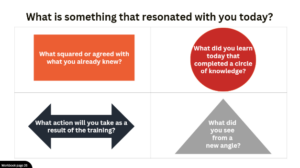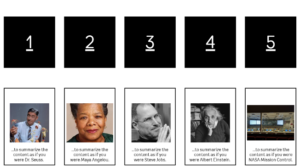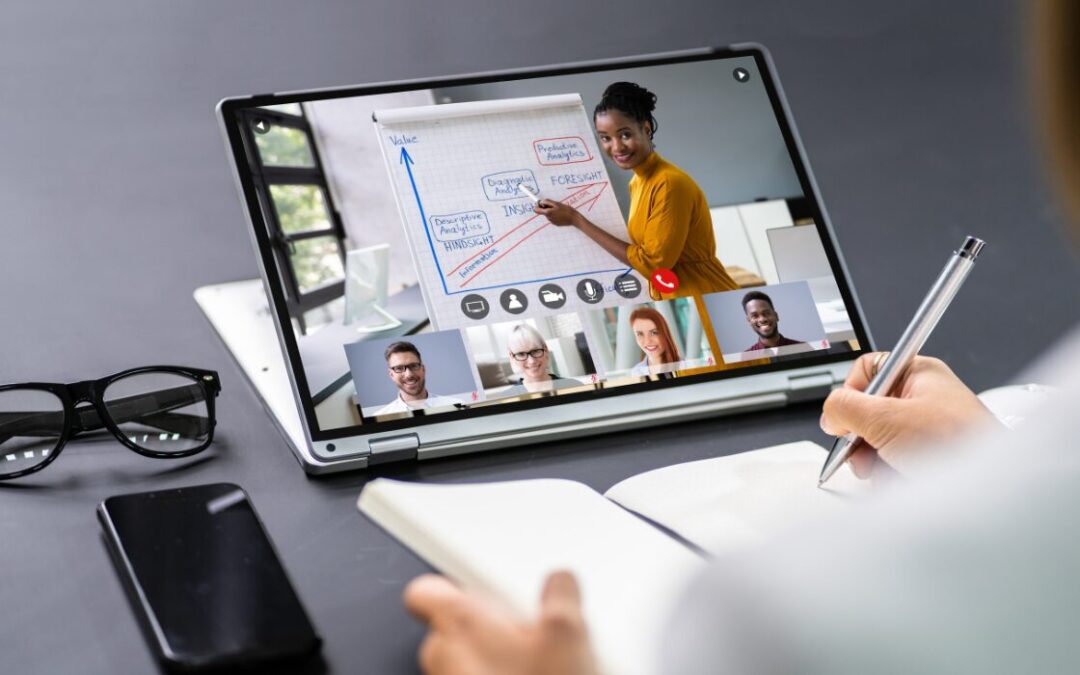About half of the projects we are working on right now are creating new Virtual Instructor-Led Training (vILT) or repurposing Instructor Led Training (ILT) to vILT courses.
Through the pandemic, we saw a massive shift from ILT to vILT, and then, post-pandemic, the pendulum swung back to ILT. However, in 2025, we are starting to see the pendulum swing back the middle, where organizations are thoughtfully making decisions about how the content can be most effectively delivered and we are seeing more a balance between ILT and vILT.
But as organizations move back to some vILT, replicating an in-person experience on a screen takes more than a Zoom link and a slide deck. To truly engage learners and drive behavior change, you need an intentional design strategy that blends strong learning objectives with engaging delivery techniques.
Whether you’re transforming an ILT program or building vILT from scratch, here’s how to approach your session design with purpose, presence, and participation in mind.
- Start with Solid Learning Objectives
Learning objectives are your North Star. In vILT, they help structure content and determine your interaction strategy. Use action verbs (think Bloom’s Taxonomy) to set expectations and guide outcomes.
📌 Pro Tip: In virtual settings, fewer objectives are more effective—aim for clarity and focus.
- Structure the Session Like a Story
Every great vILT has a rhythm. Build your agenda using a 3-part framework:
- Engage: Connection question to connect learners to the purpose or content or a poll, activity, or exercise
- Educate: Deliver content in small bursts (10-15 min max)
- Apply: Use breakout rooms, annotation tools, or shared documents or whiteboards for practice
📌 Pro Tip: Open sessions with purpose questions that help participants become fully present & engaged, create psychological safety, and align them with a shared purpose and/or the topic/theme at hand.
**Dani Watkins, CLEO of ZPS, recently became a Certified xchange Guide and has begun to integrate the xchange approach, specifically the Connect choreography, to do this.
- Design for Two Experiences: Facilitator & Learner
Don’t just think about what learners see—design your facilitator guide and support materials (like tech cheat sheets, producer guides, and polls) so you can deliver with confidence. Consider using visuals, timers, and clear cues to guide participation.
- Interaction Every 5–7 Minutes
This is the secret to keeping learners with you. Leverage:
- Polls and reactions
- Chat prompts (“Type one word that stood out…”)
- Quiet reflections or workbook activities
- Quick breakout activities
- Canva or Mural whiteboards
- Document camera (I have started to use a document camera in my sessions to illustrate concepts).
Build in Reflection and Action
Wrap your session with a learner reflection (“What’s one thing you’ll apply?”) and a simple call to action. This boosts retention and helps bridge the learning-doing gap.
We use the xchange approach, the Connect choreography, to do this and focus on a Possibility –
Future Image or Action/Commitment question like:
- What would you most like to be celebrating one year from now because of the good work we are doing here at this retreat?
- Imagine you had a magic wand, what 3 wishes would you have for that you’d like to see come true?
- Imagine we’re back together in this very same room, exactly 1 year from today… What accomplishments would you like to be celebrating? What would you like your life to look like, sound like, and feel like? What is an intention you’d like to set for today? Specifically, what will it look like sound like and feel like to live out that intention?
- As a leader, who will you choose to be? And why will this matter?
- As a leader what are the one to three most critical actions you will commit to, coming out of this experience?
- What is the smallest, most immediate action you will commit to taking?
- What are the biggest, boldest, bravest action steps you can take?
Here are some of my favorites, most borrowed from rock stars in our industry.




(By the way, this is a good one to open with and close with).
📌 Pro Tip: Connect your closing back to your opening to create more learning impact.
In Summary…
vILT training doesn’t have to be draining—for you or your learners. By approaching it with intention and designing for human connection, you can create virtual experiences that truly stick.
👉 Want to make your next vILT session easier to plan? Want to receive our weekly newsletter with tips like these plus some freebies. Join our email list!

